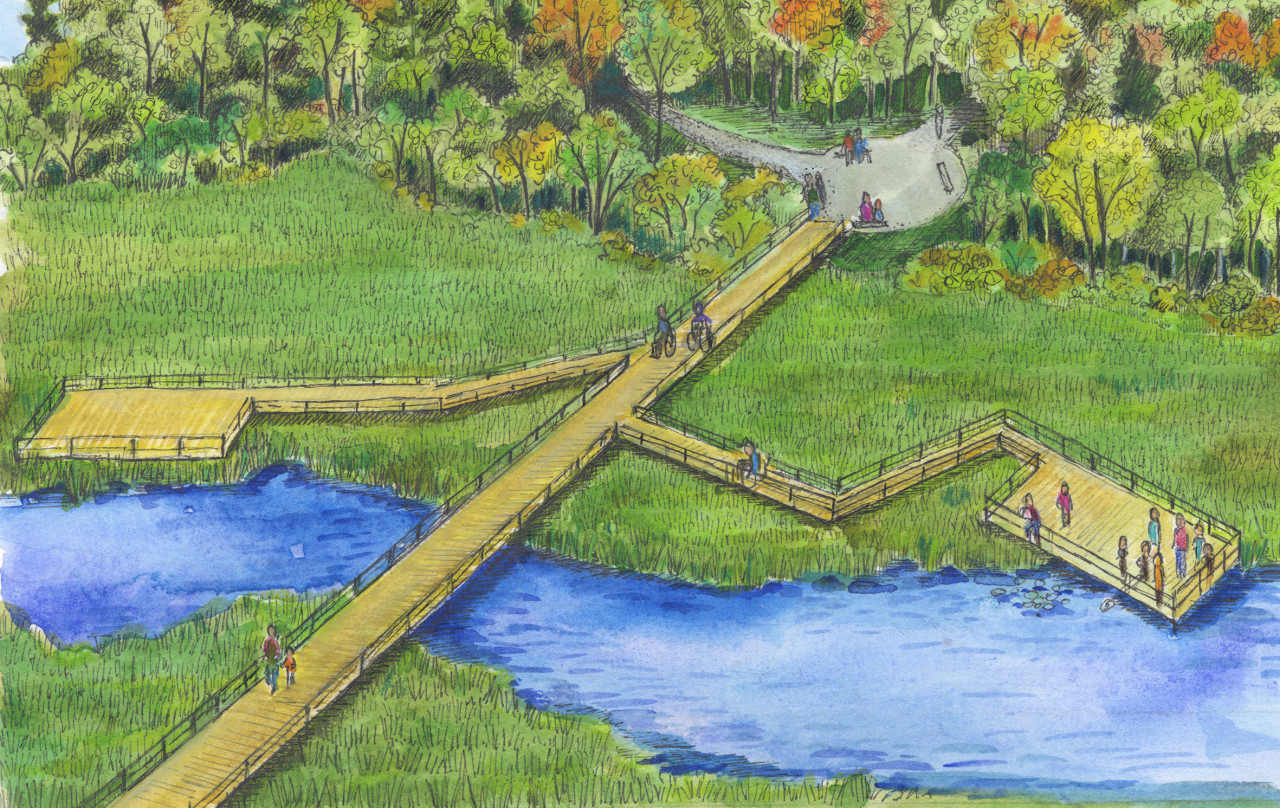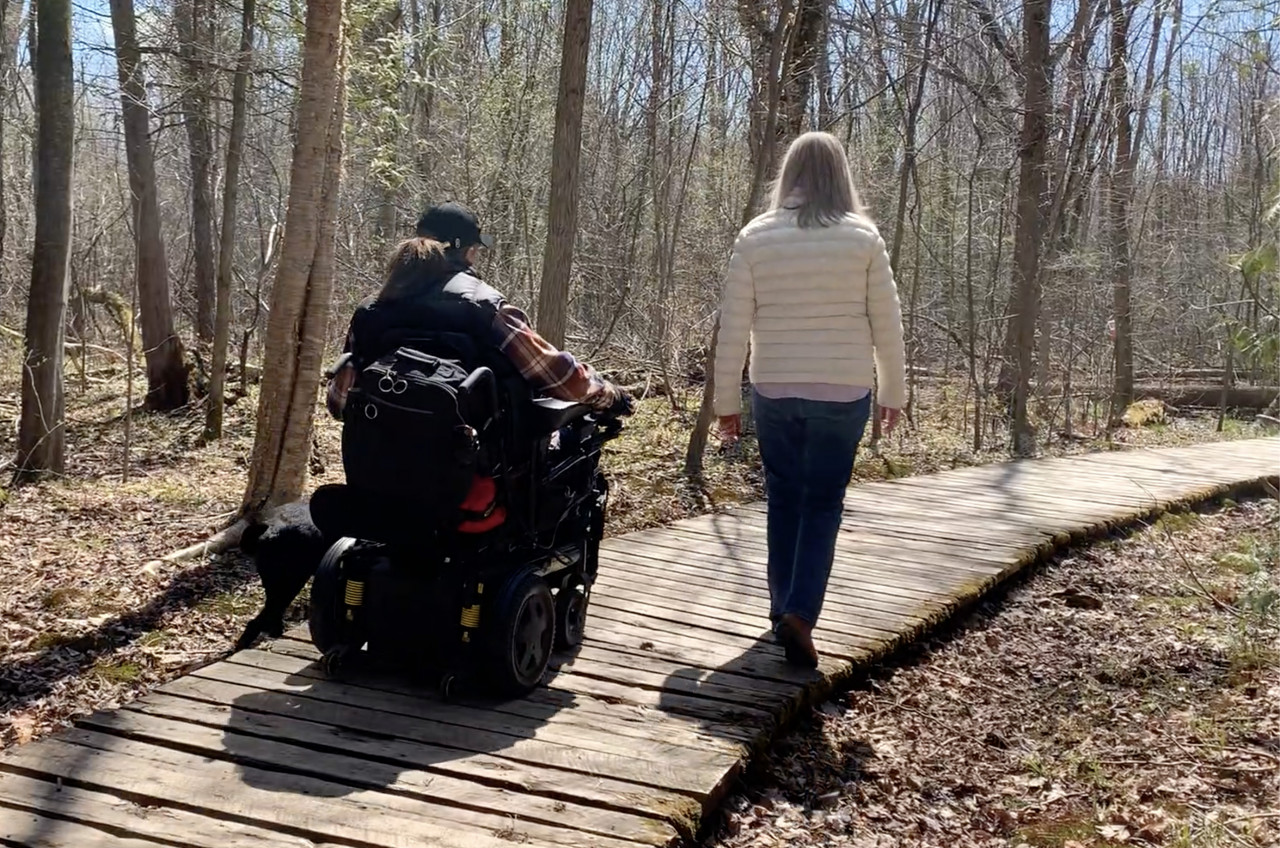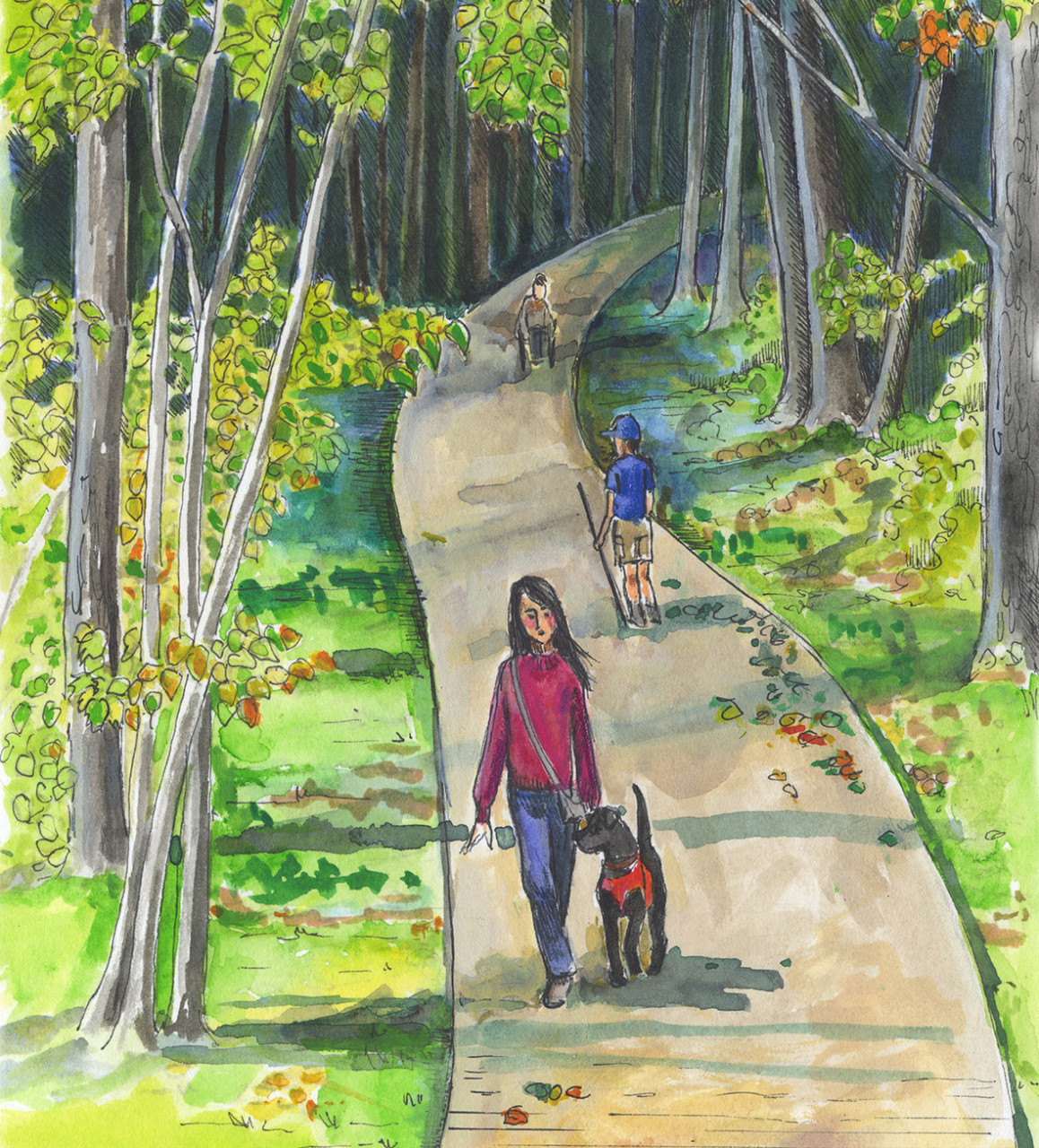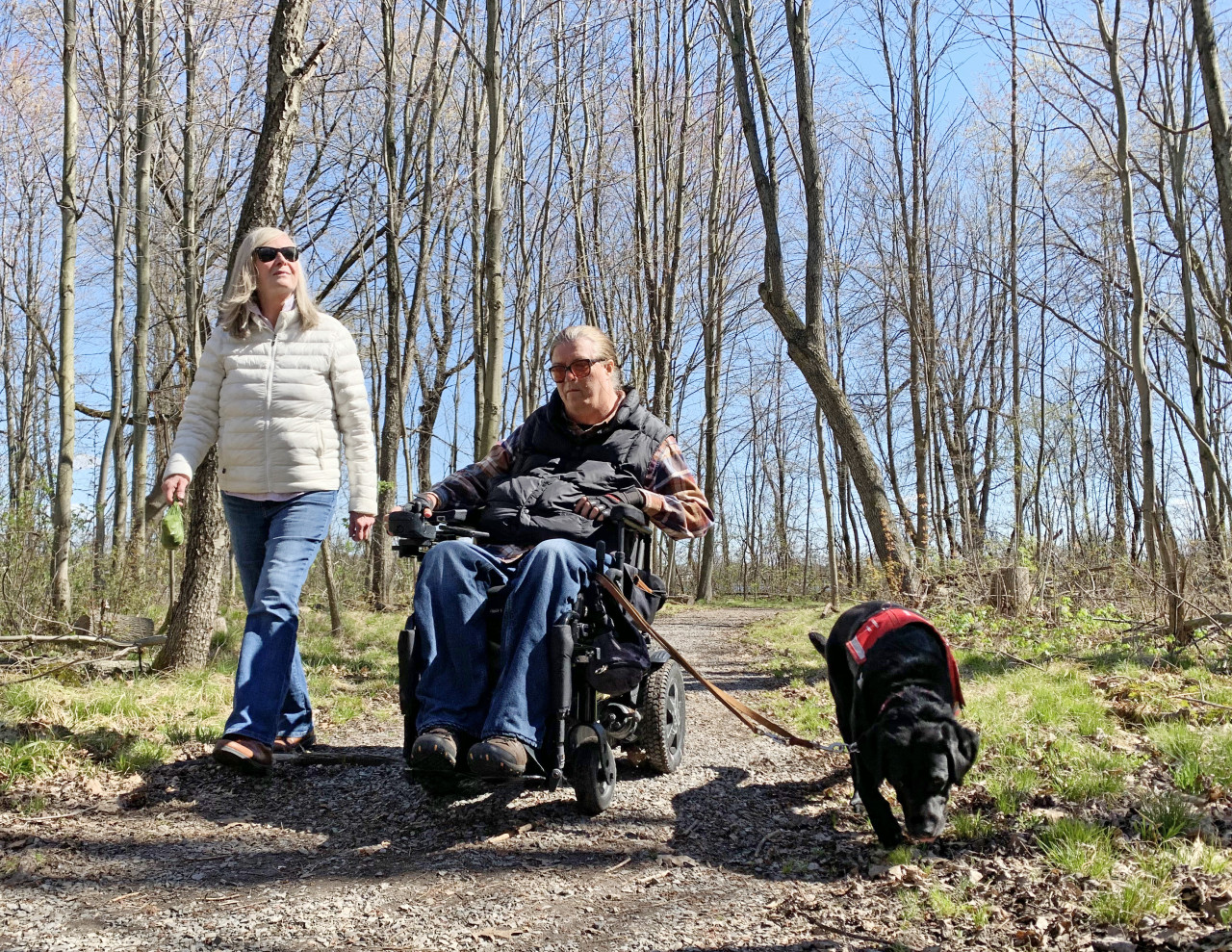Welcome to the Matrix: How we designed to the gold standard of trail accessibility
Feb. 17, 2022 – You may already know that Baxter Conservation Area's new boardwalk and bridge will offer the gold standard of universal accessibility. But what is this standard exactly, and how was it created?
That's a question for Marnie Peters, renowned accessibility consultant in the Ottawa Valley.
The matrix method
When the community-led Nature For All committee first began planning this project in partnership with the RVCA and our charitable foundation, they hired Peters to develop a unique "design matrix" of best practices combed from accessibility policies across North America and the globe: Ireland and England, the City of Malibu, the State of California, the US Department of Agriculture, US Forestry Services, British Columbia, the City of Winnipeg and more.
For Peters, simply meeting local and provincial legal requirements often isn't enough to create a truly inclusive space for all visitors. Instead, Peters prefers to compile the best technical requirements from every code, standard and guideline she can find.
"I'm always cherry picking the best requirement from each of the standards," Peters said. "In this case, I wanted to figure out what is the best in accessibility for the exterior and landscape environment and then bring these concepts and technical requirements to the Baxter experience."
This "matrix method" isn't new for Peters – she is currently applying it to the redevelopment of the Parliamentary Precinct downtown – but it was the first time she had applied it to a natural park setting.
"It was exciting and a bit of a challenge," said Peters. "I had to consider the full range of human functioning, in the context of how people use and experience the outdoors."
Low-cost solutions
When people think of accessibility, the first thing they picture is a person in a wheelchair, Peters said. But true accessibility means welcoming the entire community, from families pushing strollers, to seniors with limited mobility or strength, to people with low or no vision.
At first, this sounds overwhelming: how does a publicly-funded, not-for-profit agency like the RVCA possibly find the money to be that inclusive?
While some accessibility upgrades do cost a bit more, it doesn't have to completely break the bank, Peters said - especially when you're starting from scratch. The trick is putting more time and thought into the design from the beginning. If you're already building railings for your bridge, can you add accessible sight lines while you're at it? Do all of your trails really need a boardwalk, or can you simply swap gravel for stone dust and compact it differently?
"You have to buy all those same materials anyway - it's just about how you install them at the outset," Peters said.
Many accessible features also serve more than one group. Tactile signs with the raised outlines of fish and plants on an interpretive sign, for example, are great for people with vision loss, but also provide context for children or people with varying cognitive abilities. Including braille as well as raised images ensures more people can access the information. And justifying the extra expense is easier when it serves a broad range of needs.
Design for ALL abilities
Truly inclusive community trails don't forget the people who want more challenge or risk: the elite athlete who loves running Baxter's rugged trails, for example, or the off-road wheelchair user who enjoys the challenge of a bumpier ride.
In short, providing options for all levels of physical challenge is more inclusive than blanket accessibility features. The key is signage: making sure people know exactly where to go and what to expect on each trail, such as the length, slope and surface materials. "This lets people decide for themselves what trail they want to do, and are able to do," Peters said.
Want to learn more and support Baxter's inclusive transformation? Visit www.RVCF.ca/nature-for-all to learn more or click here to donate.
When you subscribe to the blog, we will send you an e-mail when there are new updates on the site so you wouldn't miss them.





Comments